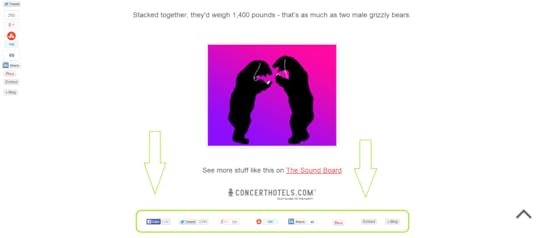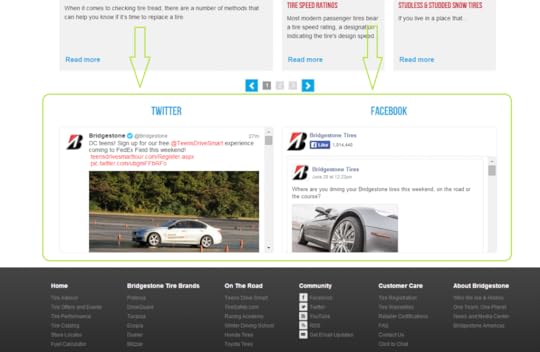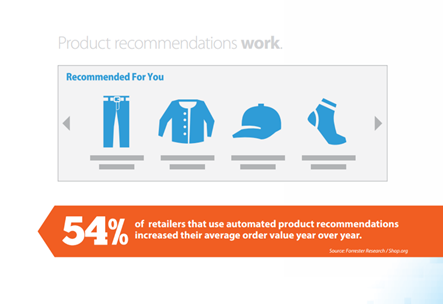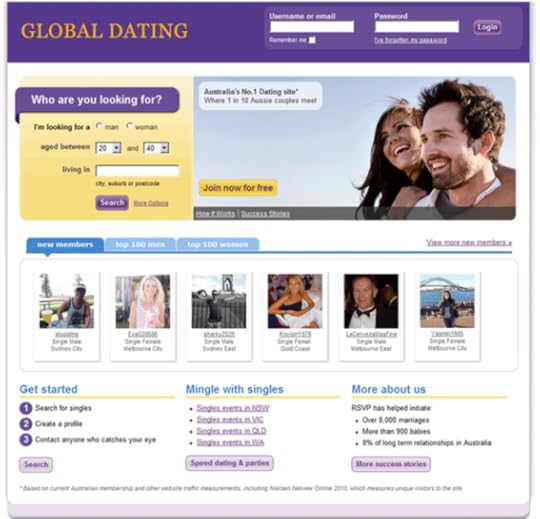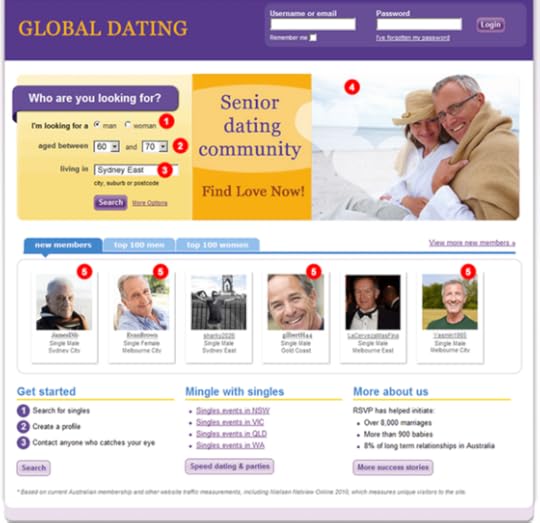Erik Qualman's Blog, page 596
July 2, 2014
Oops, Nordstrom Did It Again…

Nordstrom, the brand that has been cutting edge in both mobile and social, has done it again. It’s kicking butt and taking names with another visual app. First, there was Pinterest, where they did a great job of integrating online and offline. The brand took loyal UGC content, and “pinned” their actual items within the store — showing what consumers preferred most. This allowed some consumers to feel special, and others to get intrigued and excited by their purchase. They were allowing consumers to tell their story, and become part of the Nordstrom story (and vice versa).
Linking online and offline, seems easy, but not always the case. It’s taking different sets of behaviors and figuring out how they work together. People have very unique mobile and social behaviors, and they not only by device, but also by channel. For example, a primary behavior on Pinterest is dreaming and planning. People plan their future homes, their weddings, the arrival of a new baby, or a summer vacation. Others dream about what that wedding will be like when they arrive their one day. And others are inspired by the dreams and planning of other Pinterest users and influencers. Those dreams and plans can become a reality when you walk into a store like Nordstrom and you see those sparkly heels for your Big Day. The bride-to-be is walking into the store to be inspired in person. She may also be on a mission and searching for something particular. And a store like Nordstrom, can help her search, and/or help her “discover” more than she had thought she could find or imagine. It connects her online inspiration, with her in person discovery.
Recently, Nordstrom helped their audience connect with the products they “want” and “need” from their mobile behaviors to their in-store behaviors through Wanelo. They are are integrating social TV displays within their physical stores. This will allow the younger audience (mostly female) to be inspired and discover along with other fellow fans – what is most loved and wanted by others. Along with Pinterest, and sites like Polyvore, Wanelo allows for unbelievable engagement with products as well as referral traffic to sites and points of purchase. And if Nordstrom’s 1.2 million followers on Wanelo, wasn’t enough proof, check out these stats:
Wanelo went from 1M to 10M users in 2013
With 200,000 product uploads, Nordstrom had 30 million product saves by consumers
There was an average of 343 saves per Nordstrom product
I am sure the in-store integration will not only increase the awareness and engagement for Nordstrom, but bring the awareness of Wanelo itself for other brands through the offline audiences. Fashion brands, take note - social shopping apps like Wanelo are a gold mine for style trendsetters and fashionistas alike. And this isn’t to say that other brands can’t excel. When it comes to home decor, it’s a similar playing field (with a lot less players). Get after it.
Sources: Racked.com; Buzzfeed.com; Techcrunch.com
[image error]
Growing your Small Business in social networks

Social networks offer many benefits to business owners. The evolution of different social platforms like Twitter, Facebook and LinkedIn means you need to be updated both about the general, and the specific aspects of each channel to meet your business goals in social media. To take advantage of these channels you should stay updated and informed about updates, as well as understand each platform.
Here there are five tricks to grow your brand in social networks and will help you save time and gain exposure, more fans, better conversion rates and higher engagement:
Social networking speaks a new language
And this is the language of images, videos and info graphics. This type of media is producing excellent numbers of engagement for businesses that have become standard practice to use creatively.
Vine, the video sharing app for Twitter, Instagram and Flipboard are a few applications that increase the attractiveness of your posts and help them excel in the users’ timelines. Calls to the creative action can help build a bridge between entertainment, information and lead generation.
Know what is fashionable
If you can post information that is current and relevant to your niche, and more importantly, for your clients, you will give the audience a reason to read your posts on social networks and then visit your site.
A good tool is uvrx.com which is powered by Google custom search to show results for Facebook, Twitter, Tumblr, LinkedIn and other social platforms.
Social-searcher.com is another search tool designed to allow users to review how the keywords you chose in your social media channels work. Provides analytical reviews, revealing people to follow, feelings associated with the keywords and the type of publications you are having good results with.
Save time
Automating processes is the cornerstone for a successful strategy. Whether you’re running a business, or using consumer information through customer relationship management systems, you need to automate certain processes. If you don’t, then they will become outdated and your target audience will start to avoid you due to lack of interest, which will decrease your effectiveness in social networks.
Some activities that can be placed in automatic mode include the publication of updates across multiple platforms, send emails and SMS with favourite themes, and upload content to social media on the cloud.
Grow your base
Getting followers, subscribers and friends is key to creating a successful campaign and enjoyable social networks.
One way to find new customers is paying for ads on Facebook or Twitter as a way to increase the number of followers and likes to promote blogs. Another option is to pay for the premium subscription of LinkedIn that allows you the opportunity to reach potential partners and prospects through In Mail.
A basic trick (but often left out) to attract subscribers to your Facebook page is to send a direct message to new followers on Twitter about your Facebook page. Similar techniques should be used on all platforms of social media to capture the interest of your audience and members who are already on the radar, leading to a growth of the brand in social networks.
Accept change
When a social platform changes its guides, you have two options: Adapt or give up. When betting on the first option, you give yourself a chance to occupy the space left by someone who left the battle.
For example, a recent update to Facebook contest guidelines was to ban the announcement of the winners of competitions held on the platform through the site.
Last month, LinkedIn introduced improvements such as the ability to block unwanted messages and profiles. These are clear benefits for the popular LinkedIn groups who have to deal with large amounts of spam. You see pays to stay updated.
While some of these tips may seem common sense activities, those that might surprise you with its effectiveness are those that arise from observation and learning. Entrepreneurs may be too busy and forget to take time for creative thinking. Use strategic thinking aimed at looking regularly for ways to get better results with your social media marketing.
Image source
[image error]
A Guide to Google My Business–Combining Search, Maps and Google+

With over 1.2 billion unique users per month, Google is an amazing marketing opportunity for small business. In fact, it is so ubiquitously used, not taking advantage of the many Google Small Business products can give consumers the impression that your business is out of touch. However, with so many product offerings, getting set up on Google used to be a pain. Fortunately, the newly launched Google My Business (GMB) resolves many of these old issues, simply by streamlining its many features into one, easy to use platform. This makes it easy for you to set yourself up on Search, Maps and Google Plus, and just as easy for customers to find you via any one of these venues.
To get yourself set up and optimized on Google My Business, follow this step by step guide. Or, follow this introduction below.
Setup
Setting up Google My Business starts with asking yourself the following questions:
1. Is my business already on Google+? If not, you’ll sign up through the new Google My Business page. Good news: doing so will get you set up on Maps as well.
2. Have I verified my page? Once you have, you’ll find yourself blessed with the magical power to add photos, videos, coupons and regular specials to your page.
3. Have I chosen the right category for my business? It’s important to get it right for search engine optimization. Your hairdressing business, for example, will be a lot easier for the bots and customers to find if it’s not categorized as a bakery. You’ll be prompted to enter this as you’re getting setup with your new page.
4. Have I added all of my locations? Doing so will again make finding and getting in touch with you easier. The new GMB also makes it easier to edit and manage all of these locations from a centralized dashboard.
5. Do I know how to deal with duplicate and incorrect listings? You don’t want to do all of this hard SEO, content and social media work only to have someone else profit from your efforts or to send a potential customer to a closed location. You also don’t want old, irrelevant listings to outrank your new ones in searches. So track down old or inaccurate listings pronto, and get them fixed.
Page Management and Optimization
Once your page is established, making an effort at management and optimization will ensure you’re getting the most out of it. Again, ask yourself the following questions:
1. Have you figured out the new dashboard? This dashboard is one of the single greatest features of GMB, as it is effectively what combines all of these great Google features into one. This makes it much easier to edit, share, and analyze your listings and posts on Maps and Google+. So take some time to tour and learn all about its new features — it’s worth it.
2. Do you know what to put on your page? Google is great at making you look good, just as long as you give the platform juicy content and photos. In addition, make sure to include SEO keyword descriptors in both your listings and posts, and to set the mood with a striking, high resolution cover photo.
3. Are you making the most of insights? Insights help you see how well your G+ posts are performing — how many people are viewing them, who’s clicking on them and so forth. With this data in hand, you can better determine what type of content your audience is interested in, and how you can better drive traffic to and from your site.
4. Do you know about the Google Local carousel? The Google Carousel is that line of photos and reviews you see at that top of any local search you do — and you definitely want your business to be on it, as it attracts about 48% of clicks for any given search. To take advantage of this, just choose a good photo from your page to serve as the head photo and keep your page updated so Google knows to list you.
Engagement and Reviews
Once you’ve mastered your end of things, it’s important to make a concerted effort to curate a constant dialogue.
1. Have I identified and connected with local influencers? Social media at its best is a powerful form of networking, expertise building, and branding. Connecting with local influencers will help your brand quickly spread among your community, as they do a fair amount of the word-of-mouth marketing for you.
2. Am I getting a steady flow of reviews? There’s no doubt about it: customers today make the vast majority of their purchasing decisions based on reviews. Through them, customers get a glimpse into how you work and whether or not you fit with their mentality. Encourage your customer to leave review with a post-purchase email request or reminder, newsletters and offers.
3. Do I know how to respond to reviews? All reviews, good or bad (but especially bad) deserve a quick response, whether that’s just to do thank you or to provide your customer with an explanation or a remedy. Don’t leave them lingering; doing so looks unprofessional, and it also can ruin your reputation for new customers.
Citations
After all of that hard work, you definitely want to analyze how all of your efforts are doing. Taking a look at your citations — mentions of your business name and address on other pages — is important for this analysis, as they are a key component of ranking algorithms.
For ranking purposes, it’s important that your citations all point to the same place — hopefully, your Google+ page. As such, it’s crucial to make sure your business information and pages are properly listed across the web. You can do this manually, but it does take a fair amount of time and expertise, so you may want to pay a service to do so.
The Takeaway
Google My Business is a fantastic and much needed tool. Finally, local businesses can take advantage of Google’s many powerful products without feeling overwhelmed or confused. Check out the handy guide below to further help get set up and optimized.

Click image to open interactive version (via Simply Business).
[image error]
June 30, 2014
Youtube Around The World

Did you know that more than 80% of YouTube traffic doesn’t come from US? Check below an interesting infographic from YTD with many stats of YouTube on various countries around the world:

[image error]
Instagram: Your Company’s Newest, and Possibly Best, Recruiting Tool

 LinkedIn has long been considered the best social media resource for a small business looking to recruit new talent. However, another, less likely contender has emerged. Even more surprising is that this tool could allow your next great employee to find you before you even begin searching for them! Enter: Instagram. In the past, this platform’s usefulness seemed limited to posting brunch pictures and spawning snarky hashtags. However, with over 200 million active users, businesses have learned it is a powerful branding tool and a means to feature and promote products. Now, Instagram is clearly capable of offering even more. If used wisely, Instagram can allow you to demonstrate and showcase what makes your business unique, and by doing so, make it an attractive destination for a qualified candidate. Below are three simple tips on the types of photos you should be posting to help catch the eye and whet the appetite of a potential future employee.
LinkedIn has long been considered the best social media resource for a small business looking to recruit new talent. However, another, less likely contender has emerged. Even more surprising is that this tool could allow your next great employee to find you before you even begin searching for them! Enter: Instagram. In the past, this platform’s usefulness seemed limited to posting brunch pictures and spawning snarky hashtags. However, with over 200 million active users, businesses have learned it is a powerful branding tool and a means to feature and promote products. Now, Instagram is clearly capable of offering even more. If used wisely, Instagram can allow you to demonstrate and showcase what makes your business unique, and by doing so, make it an attractive destination for a qualified candidate. Below are three simple tips on the types of photos you should be posting to help catch the eye and whet the appetite of a potential future employee.
Post Some Personality

Socialfly Celebrations
“Behind the scenes” photos of you and your employees having fun while getting the job done are a terrific opportunity to showcase your company in a more personable light. Highlight that your team gets along and works together to handle the business at hand. Photos showcasing the people behind your brand are a great way for prospective employees to get a sense for the culture and personality of your company. It can position and establish your business as a great place to work and be a part of.
Promote The Possibilities
Exhibit some of the fun and exciting clients your company is working with. Showcase exclusive projects your company is developing and working on. This will allow potential candidates to see the great opportunities and experiences working for your company can offer them. Give them a vision of how great it is to be a member of your team. Jump-start their imagination
Present The Perks
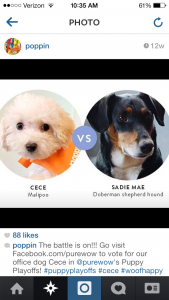 Regardless of whether or not they’re for business or pleasure, pictures of your team together are a great way to show that your company has more to offer than just a paycheck. Dinner, drinks at happy hour, or even shots of a fun client event are a way to demonstrate your team has fun both in and out of the office. Highlight the family feel of your team. Being a part of a talented group of like-minded individuals can be a powerful benefit to a prospective employee.
Regardless of whether or not they’re for business or pleasure, pictures of your team together are a great way to show that your company has more to offer than just a paycheck. Dinner, drinks at happy hour, or even shots of a fun client event are a way to demonstrate your team has fun both in and out of the office. Highlight the family feel of your team. Being a part of a talented group of like-minded individuals can be a powerful benefit to a prospective employee.
With the hope of amassing incremental sales, business owners are typically focused on featuring and promoting their products and services in an appealing way. However, doing the same when presenting the culture within your company might just help you acquire new talent to bolster your existent team. Consider Instagram a new weapon in your recruiting arsenal.
[image error]
June 27, 2014
Social Media and Luxury Travel Case Study

Now, more than ever, there is a growing emphasis being placed on customer engagement via online marketing strategies in the luxury travel industry.
This can be attributed to the prominence of the internet and the development of a new breed of customer.
Those searching for holidays are no longer reliant upon their local travel agent for information; customers now have access to thousands of online operators via computers, tablets, and smartphones. These online entities offer quick, reliable, and, most importantly, easily accessible advice.
Taking the travel industry online offers benefits like comparatively low overheads, convenience, and the ability to rapidly build a large customer base.
Whether you plan on starting out online or you are looking to strengthen your online marketing strategy it can be difficult to stand out from the crowd in what could seem an overly saturated market.
Here are some tricks and tips to help boost your company’s online success.
Have a Target Demographic
The travel industry is highly competitive; by focusing on your target customer you give yourself the opportunity to differentiate your company from mass-market brands.
Our focus in this article is the luxury travel industry, and although this may seem like a straightforward point, your target demographic should be affluent holidaymakers who are looking for a luxury break.
Establishing a successful online marketing strategy in this niche involves ensuring your product is in line with the demands of your demographic. Luxury travel customers expect four and five star hotels in the world’s most extravagant locations; Dubai, the Maldives, and the Caribbean.
Dominic Speakman, Destinology’s CEO, said of his company: “We entered a highly competitive marketplace as a new and unknown brand, but our strong contacts in the travel industry and lack of overheads, marketing only digitally in a travel world at that time still consumed by brochures, kept overheads low and gave us the competitive advantage on price.”
“A combination of targeted online marketing combined with national and regional PR to build brand awareness. A wide reaching marketing campaign started on day one and continues today – we continually evaluate to see where our new customers are coming from and alter spend accordingly. Profile brand building such as PR partnerships on The X Factor, Britain and Ireland’s Next Top Model delivers new customers, as does more targeted online activity.”
Engage and Interact with the Customer
With the advent of social media it is now a necessity for any business, established or start-up, to have a prominent presence on all social forums.
Destinology’s huge social following signifies their inherent ability to have positive interaction and engagement with customers.
Emma Morris, Destinology’s Marketing Executive, appreciates the importance of customer engagement: “I think interacting with customers can only have a positive impact – nothing looks worse than a brand that ignores customer interactions – it makes them appear somewhat false. Brands should address customer interactions, even if they are negative, to show that they value customer feedback.”
Share
Whether they have had an encounter with the local wildlife, sampled a new cuisine, or dipped their feet in the crystalline waters of an island paradise; holidaymakers want to share new and exciting experiences with their families and friends.
According to the World Travel and Tourism Council, three quarters of us do this by uploading photographs of our holidays to social media, and just over half of those polled say their friends’ photos influenced their decisions on where to go.
Travel photographs are a very sharable commodity and by embracing that excitement and intrigue you will be able to amass further engagement via your social channels.
Speaking on behalf of Destinology, Emma Morris stated: “People love to share where they have been and what they have been doing on social media sites, and then this has a knock-on effect on what other people do. Because travel and holidays have such desirability – and especially luxury holidays – people want to share the best bits with their friends.”
Remember: the more you share travel photographs over social media, the more people you are exposing to new cultures and destinations. They could even form the basis of an innovative competition.
Have fun!
Keeping customers attentive to your luxury travel offering, above and beyond that of a plethora of rivals, is the challenge presented to all online operators. To overlook the potential of social media in achieving this could be costly.
Tweeting often, sharing stunning photos, and posting regularly about bargains and special offers is only half the battle. To do so with an engaging voice, assuredly conveying your industry authority, but still retaining an approachable personality will make you stand out from the crowd.
Social media is constantly changing, so be adaptable and don’t become outdated. And, above all, have fun! What more immediate and entertaining form of marketing could there be?!
[image error]
June 26, 2014
3 Ways to Optimize Your Content for Successful Social Media Engagement

Great content is the key to most branding today — increasing traffic, cementing your reputation as an expert, and spreading brand awareness. But great content is only as great as its distribution methods. It won’t do much, after all, if it just hangs out on your website looking pretty. It needs to be read, shared, and deeply engaged with — and social media is exactly the right place to generate all three of those activities.
It needn’t be a difficult feat, either. In fact, if you look to the left hand side of this very post, you’ll see my contributor archive, which makes it easy for you to read more of my posts if you like my voice/the depth of my content/my beautiful smile (thanks, middle school orthodontist!). There’s also a social count on all of my posts, which serves as a form of social proofing (i.e. all of these other people liked my posts, so you might, too).
So, in what other ways can you optimize your brand’s content for social engagement? Let’s take a look.
1. Integrate Social Share Buttons on Your Visual Content
Concert Hotels is a travel service that connects leisure seeking event travelers with hotels and other services near the concert, show or other event they plan on attending. The brand is particularly popular among concert goers, and so Concert Hotels has done an excellent job of targeting music lovers with highly visual interactive pieces, hosted in its Sound Board. The pieces on their own are just asking to be shared; they’re fun, interesting, and require users to actively engage in order to navigate through them. Still, the brand leaves nothing up to chance, providing social share buttons throughout the content so that sharing is only ever a click away.
See how easy the social share buttons are to spot in the top left corner of this piece, which visualizes the capacity of an iPod in vinyl?
Again, there is also a social media count to encourage even more social interaction. The higher the count, the more likely other people will be to share — really, it’s kind of a social media snowball effect.
The left hand social sharing bar is sticky, so you can still see it at the very bottom of the post, where the same set of social buttons is also spread horizontally to cover all the places where people might be looking at this point.
All of the major social sites are included, and it’s easy to embed the piece directly into your site.
2. Insert a Text Tweet Link Into Your Copy for Easy Sharing
As effective as social sharing buttons can be, sometimes you’ll want to generate user engagement right when you’ve really piqued a reader’s interest, like, say, after a particularly insightful line about an issue that really matters to your audience. A text tweet link is great for moments like these, as they allow you to generate engagement mid-read without losing their attention. As you can see below, these are really like shareable pull quotes:
They’re fully embedded into the post itself and you can tweet it right from the page, so it doesn’t disrupt the reading experience. A text tweet like this does double duty, since it generates engagement while also visually breaking up the page, just like a bolded header or image. This opens up a perfect new opportunity to promote social sharing within the text itself.
3. Embed Social Media Streams Inside Content
If there ever was a content-rich resource center, it’s Bridgestone’s Tread and Trend hub. Here you’ll find everything from tips on car and tire maintenance to stories about the company’s newest products and its environmental initiatives. With so much content to play with, there’s a lot to say — which is why it makes sense that the company has embedded its Twitter annd Facebook feeds right at the bottom of the resource center page:
With the feeds right there, the reader is automatically encouraged to join in on the discussion. And because they don’t have to go anywhere to do it, bounce rates won’t increase. Not only does this promote engagement with the brand, but it also creates a social media-content ecosystem right on the brand’s own page, giving Bridgestone a lot more control over the experience it creates for its customers.
The only caveat here is that sometimes embedding feeds like these can be overwhelming. That’s why it’s generally better to place them at the bottom of the page, rather than in the sidebar, and not to include more than two feeds. You, however, should be the ultimate judge about whether or not embedded feeds make your page look too cluttered and distracting.
The Takeaway
The purpose of great content is to generate deep customer engagement and heavy social sharing. That starts with producing great content in the first place (bad content won’t be shared, no matter how easy you make the process). But just as important is making sharing as easy as possible from there. One click max is ideal, right from the site itself. In essence, you want the content you post to be a part of a wider conversation — one you generate and promote in every way possible, directly from your site. Really, there’s no better way to engage customers and spread your brand.
How do you promote social engagement with your content on your site? Let me know in the comments below!
[image error]
June 25, 2014
What Social Media Works Best For Your Ecommerce?

The face of ecommerce looks drastically different in 2014 than it looked in 2004. Only via the Internet can a mere decade produce such fundamental changes in the way products are sought after and pitched over a medium. Auto dealerships, grocery stores, those mega-marts, etc.; they might tweak and tone, but never any huge changes. But on the Internet, even sites that have been around for a long time, such as eBay and Amazon, have changed. They’ve created mobile sites, they have social presences, and they engage with users as the market demands.
If you’re hoping to achieve any level of success as an online entrepreneur, then adapting to the ecommerce situation of today’s P2P-driven social market is vital. But, of course, that’s easy to say and harder to do. Which social sites are actually best for your ecommerce efforts?
Here’s a bit of information about which sites work well for certain factors, and which niches typically enjoy the most social success.
Ecommerce Considerations and Which Networks to Shoot For
A Pure Traffic Blitz
Looking at all the many different social networking sites out there, it’s clear which one rules the roost. Facebook has over a billion users. Enough said. But does that necessarily make them the best for traffic? By sheer numbers, the answer is an emphatic yes. Though it doesn’t stop there. With a unique user interface, a cutting-edge algorithm, and a wide variety of ad options, including ad-management apps to improve on the site’s own features, Facebook continues to dominate in this respect.
Last year alone, Facebook sales grew a whopping 129%, and that’s on top of cost increases on ad spending and more traffic going to newer social sites. When it comes to this social network ecommerce is in its blood. So if it’s traffic you’re after, and all the reach, depth and reputation that come with it, Facebook is the king.
Highest Order Values
Traffic is a fantastic thing that can lead to a hugely popular brand, thousands upon thousands of fresh leads, loyal, repeat customers, and much more. It’s all possible through traffic. But ecommerce isn’t only about the traffic jams; it’s about the bottom line. Which social networking sites typically have the highest AOV (Average Order Value)?
AOV means, basically, a customer buys something for $49.99 rather than $19.99. Any business seeks the former. The top three spots in the AOV category go to: Pinterest, Polyvore, and Instagram.
But these three sites aren’t nearly as popular as Facebook or Twitter. Why would they sell better products more effectively? The answer is the imagery. They’re photo-based sites. Photography and high-quality imagery sells incredibly well, much better than text and the typical hyperbole writers think up. Yes, it’s a cliché, but an image is worth a thousand words.
Don’t worry too much about having to abandon high-traffic sites. Brands that use images sell more than brands that don’t, no matter which sites they’re using.
Types of Products that Sell in Social Media
So, Facebook is the king of traffic, and image-based media sites sell the most expensive products. But which types of products are selling in social media? The answer here isn’t very surprising. After all, if you want electronics, furniture, clothing, etc., there are countless stores delivering those goods. Lifestyle brands speak a more social language to Internet users, and thus health-and-beauty, weight-loss, makeup, antiques, and gadgetry (not necessarily iPhones) are what earn the biggest bucks.
Most of this has to do with the unique ability on social media to actually present a story with the product, along with reviews and critiques and recommendations from other social users. It all seems real and organic compared to commercials or magazine spots. So if you’re in real estate, automotives, or another industry that isn’t really in the “lifestyle” wheelhouse, as broad a niche as it is, you might have a difficult time finding a profit.
The Key Takeaway for Marketers
The fact of the matter is that there is no definitive answer to which social network(s) is the best fit for your ecommerce efforts. It all depends on what you’re selling, to whom you’re trying to sell it, and how much you’re willing to put into your sales efforts. Though if you’re playing it strictly by number, then it’s clear that Facebook is the social site where you’ll receive the most traffic, while image-based networks are great for selling higher-dollar goods.
If you take anything away here, it should be the realization that you should split the difference. You don’t have to pick one network over another. You can create a Facebook page, an Instagram account, a Twitter profile, etc., and build a cross-platform network that feeds off of each site and promotes a larger brand presence.
Just remember that a mere presence isn’t enough. Measured, quality engaging marketing is a must in social media.
Image Credit: https://www.flickr.com/photos/mkhmark...
[image error]
June 24, 2014
Must Have Roadmap: From Customers Who Browse to Customers Who Buy

It’s every marketer’s dream. To have limitless visitors walk in through your store’s doors every day and have each one of them walk out as a paying customer. Ditto for an online store.
Unfortunately, reality is often different from wishful thinking. With average conversion rates between 2 and 5%, most ecommerce stores are light years away from converting every visitor into a customer.
Is it all your fault? Are you inherently doing something wrong to chase away customers? Well, yes and no.
There are ecommerce stores that do a terrible job of attracting and retaining a customer’s interest through flawed design and conversion principles. Then there is that great pastime that shoppers swear by, which is the bane of all business owners – window shopping.
There is no single secret sauce to great conversions. Conversions happen when websites get their basics right and push the envelope to tempt window shoppers who had no intention of shopping into parting with their cash.
Assuming you have already taken care to create a great product (or service), priced it right, and backed it up with excellent service and warranties, this is what you do to master the art of teasing in those window shoppers and making them buy at your store…
1. Showcase It Well, Make Them Want To Buy
Imagine walking into a run-down store where the products are hidden behind dirty old fashioned shelves with piles of unrelated clutter barring your way to the shelves.
That is what a customer experiences when they walk into a messy, cluttered and unplanned ecommerce site. Your website is your biggest marketing tool. Don’t let it put off your customers; reel them in using your site.
Keep the site clean and clutter free with products laid out in such a way that brings out the best in them. Use stunning, large product images that do full justice to the products you’re selling and allow the visitor to get a good feel of the product. Images are important! Our natural propensity towards great images is proven by the success of image oriented sites like Instagram, Flickr and Pinterest.
Your site copy plays an important role in convincing a visitor to make a purchase. Let the copy reflect your brand’s personality. Headline copy should pull the eye in and convey in crystal clear terms what your product is all about. Infuse a sense of urgency in the copy in appropriate places to help along conversions.
Playful product descriptions that tell a story about the product and how it can benefit the user make a lot more sense from a conversion perspective than boring old manufacturer descriptions. Another bonus of good, unique copy – it’s great for SEO.
2. Personalized Website Experiences
With the advent of Big Data and myriad tools to use it for business growth, there is a wealth of customer data that businesses now have access to. From which sites they browse to what items they buy, to where they live and where they hang out, the sheer quantum of data available is mind boggling.
This sort of visitor and customer profile data can be used effectively to create experiences for the customers that are personalized to their tastes and shopping patterns.
Create personalized website experiences with tools like Adobe Target or Monetate or Personyze. Here’s an interesting example of a personalized webpage based on a visitor’s profile information. The visitor in question is an older woman, interested in dating men and based in Sydney Australia.
BEFORE PAGE:
AFTER PAGE:
Another way to encourage a window shopper to make a purchase, or at least commit to a future purchase, is by helping them in making the purchase decision. Visitors who are researching a future purchase will be blown away if you can proactively reach out to them during their browsing session and with guided selling tools like iGoDigital.
3. Easy Navigation, Products Easily Findable
While many visitors may have lots of time to browse around and hunt through tens of pages to arrive at that perfect pair of black leather shoes, many others are in a hurry to get in, shop and get out ASAP. Something like your state of mind when you stop over for a loaf of bread at the local grocery store on your way back from work. You just want to get it done in no time.
Think like the customer when you design your online store’s navigation. Create logical product categories that give way to well-ordered sub categories to make navigation easy. Put in a search bar on your home page to enable even more impatient shoppers to directly search for exactly what they want and leave with their purchase quickly.
Remove unnecessary steps like registration in the middle of the checkout process. About 66.9% of all online shoppers abandon their shopping carts. Irritatingly long checkout processes are one of the key reasons for this number.
4. Tempting Deals and Offers
How many times have you walked into a store and walked out with stuff you didn’t really need, purely because you got a great deal on them? Too many times to remember, probably.
Window shoppers LOVE a great bargain. It validates their habit of window shopping and gives them bragging rights in front of their peers.
Always have at least one unbeatable deal live on your site at any given point of time. These can be funded by negotiating killer rates from your suppliers, by using marketing funds to subsidize the discount or even asking the supplier to co-fund the deal so you sell more product and both you and the supplier benefit in the process. Talk about a win-win!
5. Multiple Payment Options
Where would you rather shop? A store that accepts payments via cash and debit card only or a one that offers a payment method of your choice? Needless to say, more user friendly your payment policies are, the higher are the chances of making a sale.
In this era of the Bitcoin, no online store can afford to offer just one or two payment options. Sure, each payment option costs you money to host on your site; but not having all the popular payment options always ensures that some visitors walk away without buying anything.
Accept payments via credit cards, debit cards, online bank transfers, PayPal and any other method of payment that your target audience prefers. Consider using a smart cash register like Shopify’s that accepts all the regular payment options with unique customer friendly add-ons like accepting partial payments. And importantly, clearly communicate that you accept all payment methods to avoid any confusion.
6. Customer Testimonials, Logos of Clients
A surefire way to build trust in a customer’s mind is by displaying testimonials from real clients, with their real names and company details. It is proof that you are proud of your past work and feel confident enough to offer past customers as references that will help convince undecided new visitors. Product reviews by real customers is the equivalent of a testimonial on ecommerce sites.
How you display the testimonials is also of key importance. A two line testimonial right out of a template wears thin in comparison to a heartfelt testimonial that describes the customer’s journey with your brand and how they benefitted from their association with you.
Tell a story, not a couple of awkward sentences. Be creative and place them across various locations on your website that your visitor would likely interact with, not just the home page or a landing page. Ensure you include product reviews with every product that is listed on your site (OK, most products will do). It is reassuring to a visitor to read about a positive customer experience with a particular product and helps them in making their purchase decision.
Use logos of past and existing clients (especially if they are recognizable brands) on your website to build instant trust. When a customer sees that a brand like HP or Adidas trusted you with their business, they’d automatically think that there must be something worth checking out here.
7. Retargeting
So you tried all the tricks in the book, but a few visitors still managed to slip through your fingers? Don’t lose heart. For all you know they probably never intended to make a purchase during the last visit to your site anyway.
Now that they have visited your site and are aware of what they can expect from you, brand awareness is no longer a problem. Assuming you followed all the other conversion principles to the T, retarget these visitors with relevant ads of products they browsed for, in the form of display ads, Facebook retargeting or even email retargeting. Throw in a special offer to help seal the deal and see your conversions grow!
[image error]
Raising the Bar: How to Amplify Your Social Media & Content to Reach Your Ideal Audience

Within the past few years, we’ve witnessed a variety of social media trends for business emerge. And as a business owner, you might have even given a shot at several of them in hopes of seeing improvement. Unfortunately, there is a reason why one strategy will work for one business and not the other. The fact of the matter is that there is no one marketing strategy that will work for any one business, which is exactly why you need to start thinking outside the box, and utilize and combine your brand’s social media and content in a way that is best for your business’s goals.
While social media by itself can be effective to a point, without some form of content marketing in the mix, your business could be missing out on some great potential. The trick is to find the perfect balance so that you’re able to enhance your brand.
With so many marketing avenues to pursue, it can be hard to determine the best route to follow. Luckily, by following these tips, businesses can really raise the bar on their social media and content marketing.

Know your Audience
Understanding who the target audience is can help a business determine how they will attract and engage their customers. Carefully profiling the ideal customer will tell them where to market, how to market, and what content will most effectively reach them.
For example, let’s say your target customer is a 20-something female college student. Chances are that posting ads in the local newspaper won’t be the best way to reach her. For this particular demographic, it is best to spend time marketing online and on social media networks. In addition, this particular business should not try to market high-end, costly products to this particular customer. Being on a college student budget, she is most likely not going to be spending a lot of money.
Information such as gender, age, location, and economic status may seem insignificant when finding the best marketing tactic, but knowing as much information as possible about their potential customers can really help a business determine how that customer spends their time and money.
Amplify Social Media
Tailoring the content for each social network can certainly improve how you reach the right audience for each particular network. Depending on which platform(s) you are utilizing:
1) Twitter: Best for keeping customers updated a few times each day. Posts should be short, sweet, and easy to digest. Tweeting about trending topics and relating them to your industry is a great way to draw in more attention to your business.
Furthermore, with Twitter, timing means everything, so be sure to do your research and determine when the most effective time will be to tweet.
2) Google+: With Google+, posts can go a long way as far as exposure goes. By optimizing your information, such as the SEO title, page URL, and meta description, you’ll be able to build a stronger foundation for your brand’s success.
3) Facebook: Like Twitter, the time at which you post on Facebook will have an impact on the total reach. Because it’s not recommended to post as frequently as you would on Twitter, knowing when your fans are online viewing their News Feeds is crucial.
The Facebook platform offers plenty of ways engage with fans. Allowing people to post content on your business’s Facebook page, hosting “caption this” contests with images, replying to comments, and tagging commenters are all effective ways of communicating with your audience.

Reach Out
Interacting and engaging with people who aren’t currently following your business is another way to make sure your content is reaching your targeted audience. While it is important to interact with those who are already in their inner circle, reaching out to those who aren’t familiar with your business can increase influence and expand reach.
Lastly, accepting outside contributions on your business’s blog can help magnify their content as well as social media reach. Inviting others to contribute posts to a blog adds fresh, new content, and also allows the blog to be seen by the followers of the guest writer as well.
Connecting with Customers
“Put yourself in their shoes” is a phrase that is fitting. Understanding how the customer feels and what they are looking for can help a business figure out what is best for their customer, not just what is best for business. Going the extra mile to ensure that customers get the best product for their needs will increase the chances that the customer will become part of a loyal customer base.
Bringing social media marketing and content marketing together can really help amplify a business’s marketing strategy. In order to get this tactic right, it is important to understand the audience, magnify social media measures, and connect with customers on an emotional level.
[image error]



